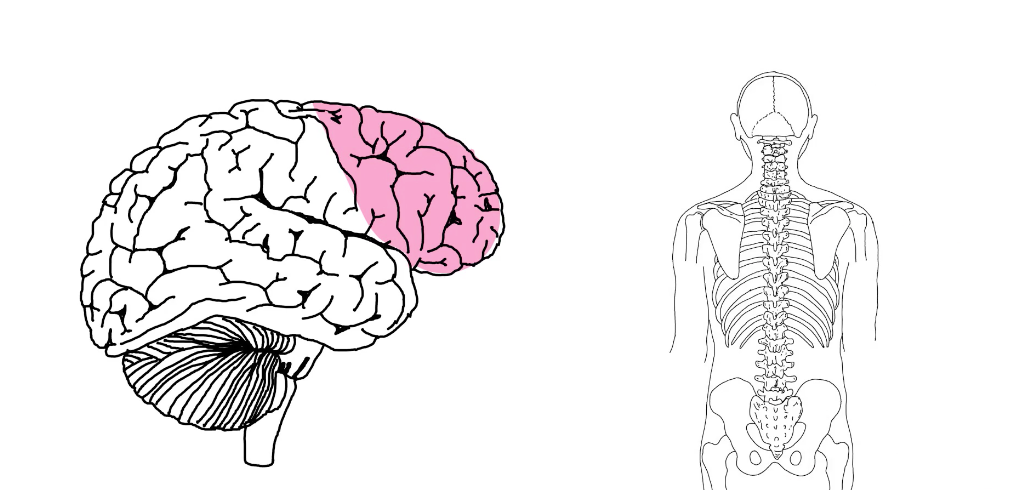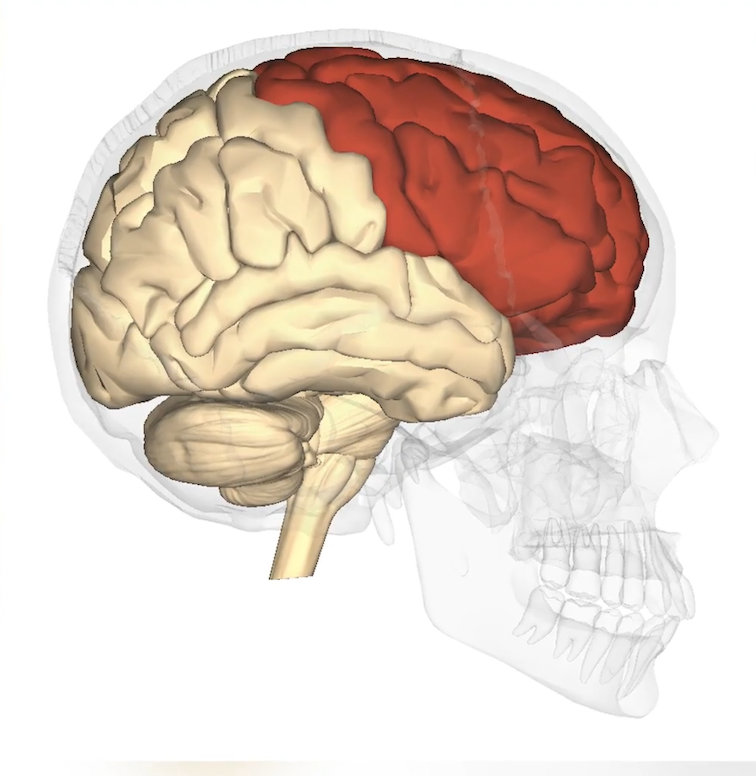The Prefrontal Cortex (PFC ) – effect on the body and its functions in health and dis-ease

The PFC is involved with many bodily functions as the PFC in part of neural networks that modulates the overarching systems of neural modulations such as the autonomic nervous system (ANS), endocrine system and the immune system.
It is involved in pain perception, emotional regulation, immune response, inflammation and pain to mention a few areas.
Many symptoms have been linked to the function of the PFC, such as gastrointestinal pain, stiffness and pain in the body, high blood pressure and high heart rate and low heart rate variability (HRV) are linked to the (dys)function of the PFC.
We will be looking at the underlying functions that are involved in the health of the body in this article and the evidence to support why people report improved physical health as there PFC function improves.
We know that as the PFC gets easily effected by stress and thereby downregulated in its function it has a huge impact on how heathy we behave and our bodies function. Stress disrupts prefrontal cortex and over time Prefrontal regulation shuts down during major stress.
“The reduction in PFC functioning that occurs during stress is highly relevant to understanding human mental and physical health. Loss of self-control during stress exposure can lead to relapse of a number of maladaptive behaviors, such as drug addiction, smoking, drinking alcohol and overeating”
Arnsten, A. F. (2009). Stress signaling pathways that impair prefrontal cortex structure and function. Nature Reviews Neuroscience, 10(6), 410.
The stress response link to chronic inflammations
A chronic overactive stress response is considered a key factor behind chronic inflammatory conditions. Stress has a big impact on the regulation of inflammation in the body.
The PFC is very much involved in the stress response and our capacity to modulate it and build resilience to stress. The PFC neural connection to pain and inflammation is that the PFC directly affects right vagus nerve and the Vagus nerve is part om the regulation of inflammation.
Thayer, J. F. (2009). Vagal tone and the inflammatory reflex. Cleveland Clinic Journal of Medicine, 76(Suppl 2), S23-26.
Chronic Inflammatory processes has a strong link to chronic disease “mounting evidence suggests a common underlying cause of major degenerative diseases. The four horsemen of the medical apocalypse — coronary artery disease, diabetes, cancer, and Alzheimer’s — may be riding the same steed: inflammation.” https://www.health.harvard.edu/newsletter_article/Inflammation_A_unifying_theory_of_disease
Pain modulation
The PFC is involved in pain modulation, how we perceive and handle pain. It is believed that the PFC is involved in whether the pain will become chronic or not. It has been found that chronic pain patients have a shrinkage of the PFC grey matter on fMRI. Neuroplastic changes of key areas in the brain such as the PFC is thought to be involved in pain remaining when there is no longer any tissue damage present.
Lorenz J, Minoshima S, Casey KL. Keeping pain out of mind: the role of the dorsolateral prefrontal cortex in pain modulation. Brain. May 2003;126(Pt 5):1079-1091;
Apkarian AV, Sosa Y, Sonty S, et al. Chronic Back Pain Is Associated with Decreased Prefrontal and Thalamic Gray Matter Density. The Journal of Neuroscience. 2004;24(46):10410-10415.
By strengthening the PFC it is thought that the vagal tone is increased and more effectively can modulate pain and inflammation.
Tracey, K. J. (2002). The inflammatory reflex. Nature, 420(6917), 853.
The PFC is involved in sensorimotor integration
And in the learning and integration of complex movement habits. A more developed PFC is part of the process whereby we learn to impulse control and modulate otherwise instinctual movements. Issues that many children with Autism, ADHD, OCD and nocturnal enuresis, to mention a few, struggle with.
What has a positive impact on the PFC function?
I have been a Chiropractor since 1996 and as a Neurology based Chiropractor utilizing Neurofeedback, biofeedback and Chiropractic care since 2005 at Welledge in Old Town Stockholm, to impact the function of the nervous system. I daily see the positive impact of enhanced and more efficient neural regulation on a wide area of dysregulation issues in the body.
Chiropractic care have in a similar way as Neurofeedback a growing amount of research showing the impact on the brains plasticity and self-regulation, in particular the influence on the PFC. Which gives a common focus on brain plasticity and neural modulation. More research is needed, and yet clinical practice supports what current research indicates.
Several studies show promising effects of neurofeedback, for children with ADHD and for patients suffering from PTSD to mention two areas which has both physical, emotional and mental traits.
Marx, et al 2015; Nicholson 2019
Neurofeedback and Attention‐Deficit/Hyperactivity‐Disorder (ADHD) in Children: Rating the Evidence and Proposed Guidelines –Martijn Arns · C. Richard Clark · Mark Trullinger · Roger deBeus · Martha Mack · Michelle Anifto – Applied Psychophysiology and Biofeedback https://doi.org/10.1007/s10484-020-09455-2
Chiropractic effect on the Brain
A Four Case Study by Richard Barwell, D.C.; Annette Long, Ph.D; Alvah Byers, Ph…. Page 3 of 6
Effect of Chiropractic adjustment on brain wave pattern
Haavik Taylor H, Murphy B.A., (2010) The effects of spinal manipulation on central integration of dual somatosensory input observed following motor training: A crossover study. Journal of Manipulative and Physiological Therapeutics33(4):271-262.
Haavik H and Murphy B (2012). The role of spinal manipulation in addressing disordered sensorimotor integration and altered motor control. Journal of Electromyography and Kinesiology, in press. doi:10.1016/j.jelekin.2012.02.012
Contact us for further information about our programs for NeuroSpinal rebalancing at martin.fransson(at)welledge.se

ADHD, Brain plasticity, Chiropractic, Neurofeedback, PTSD